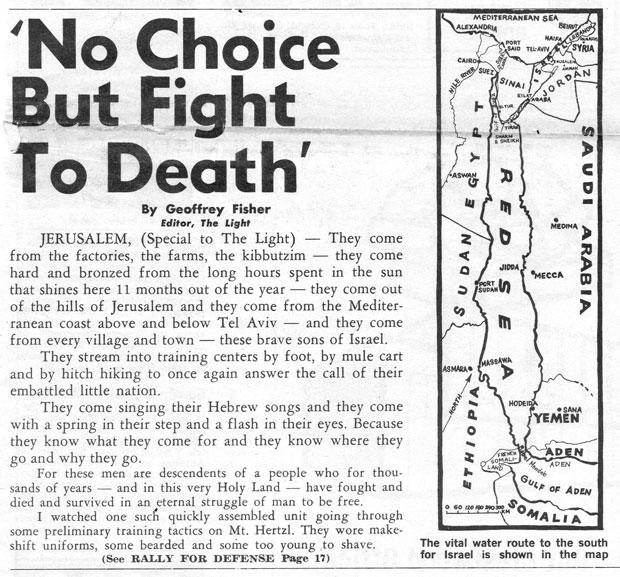June 6, 1944 and 1967: Important dates affecting Jewish history
Published May 28, 2014
There are some dates in history, general and Jewish, that stand apart from nearly all others: Sept. 11, 2001, the terrorist bombings in New York and Washington D.C.; Oct. 12, 1492, the expulsion of the Jews from Spain; and Dec. 7, 1941, the attack on Pearl Harbor, which President Franklin D. Roosevelt called “a date which will live in infamy.”
Then there is the Sixth of June, which marks two pivotal dates in history: June 6, 1944, D-Day, the launching of the Normandy Invasion, which would lead to the defeat of Nazi Germany and the end of the Holocaust; and June 6, 1967, the first full day of the Six-Day War in the Middle East, a conflict whose aftermath is still being played out in the Middle East and on the world stage.
Back in my pre-Jewish Light days, I shared an office with William B. Breuer, a World War II veteran who was part of the Normandy Invasion all the way through the liberation of Paris. Breuer, a former newspaper editor with a photographic memory, described in vivid detail exactly what it felt like for the frightened GIs to land on the Normandy beach.
“Bullets flew around your head like hornets from a nest,” he told me. “Buddies on your left and right were shot dead by the Nazi machine guns, which fired down from bluffs the survivors would have to capture. We were seasick, scared out of our wits, but we had no choice but to go forward.”
Breuer, who would go on to publish scores of books on World War II history, was interviewed by Walter Cronkite when he did a 50th anniversary special for CBS television in 1994.
Here in St. Louis, the 50th anniversary of D-Day was observed with solemn ceremonies sponsored by the Jewish War Veterans of the USA, Missouri Department. I had the honor of being the guest speaker at the event, which was organized by the local JWV and its auxiliaries. Arnold Leidner and Joe Iken served as co-chairmen of the event, which was held at the Jewish Federation Kopolow Building.
Fast-forward to June 1967, when the American Jewish Press Association was holding its annual conference in Jerusalem, right as the Six-Day War broke out. Geoffrey Fisher, then-editor of the Jewish Light, sent a breathtaking first-hand story to the Light, which appeared on Page 1 of the June 7, 1967, issue, headlined, “No Choice But to Fight to Death.”
Fisher wrote: “They came from the factories, the farms, the kibbutzim – they came hard and bronzed from the long hours spent in the sun that shines here 11 months out of the year – they came out of the hills of Jerusalem and they came from the Mediterranean coast above and below Tel Aviv. They stream into training centers by foot, by mule cart and by hitchhiking to once again answer the call of their embattled little nation. They come singing their Hebrew songs, and they come with a spring in their step and a flash in their eyes. Because they know what they come for and they know where they go and why they go. For they are the descendants of a people who for thousands of years – and in this Holy Land – have fought and died in an eternal struggle to be free.”
On the same Page 1 was an article about an Israel Emergency Rally convened by the Jewish Federation to raise funds for the embattled Jewish State, which in six days was to stun the world with its incredible victory, in which Israeli forces liberated Jerusalem for the first time in 2,000 years and ended the war in charge of administering the Sinai, the Gaza Strip, the West Bank and the Golan Heights.
Yes, the Sixth of June is important on both the general and the Jewish calendars. We remember with respect the brave men and women who fought and died in defense of their nations and their shared ideals of democracy and freedom.















